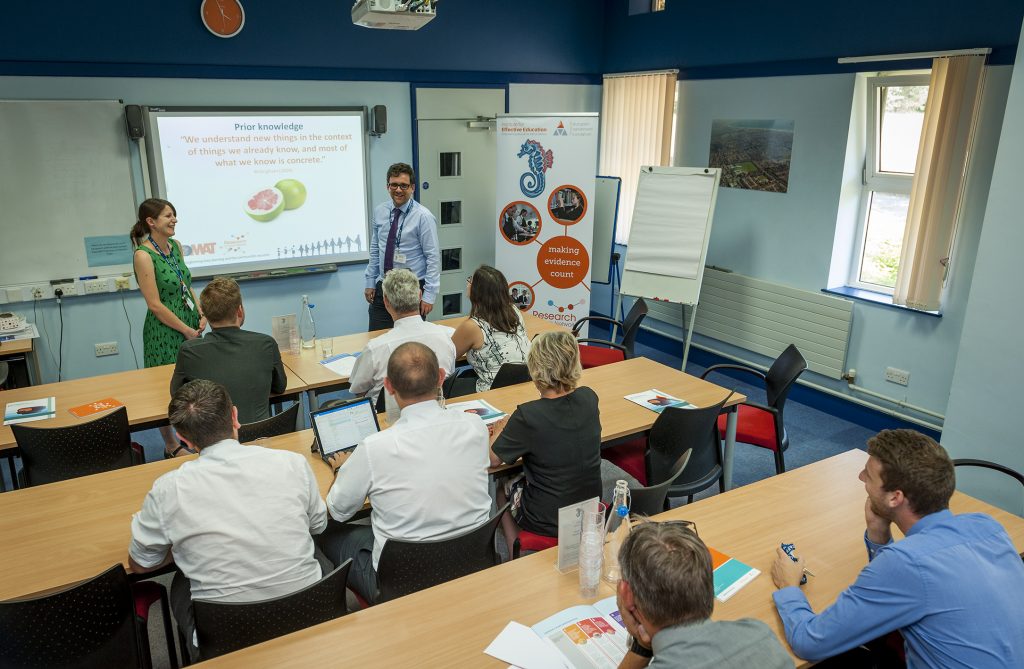Earlier this month the EEF released their newest guidance document – “Using Research Evidence – A Concise Guide”. The release of this document reflects the positive growth in school leaders and teachers turning to research evidence to plan and guide their school improvement. However, using research evidence effectively in schools does require some careful thought and overcoming a few hurdles.
Hurdle 1:
Research evidence is defined as “the communication of findings from a study that answers clear research questions through planned and deliberate processes for collecting and analysing information”. Unfortunately, not all evidence available to teachers is drawn from research, and because we are busy people, we don’t always have the expertise and time to trace evidence claims back to the research from which they are based. Even publication is not “in and of itself” a guarantee of reliability.
To add to a further layer of complexity not all research is the same, and identifying the type of research that is best is not always possible or at best highly dependent on context. For example, if a teacher/school leader is interested in how/why a particular a particular intervention or approach works than a broad range of evidence will be beneficial including a range of case studies and other qualitative data sets. Meanwhile if a leader is interested in measuring the effectiveness of an intervention than quantitative studies (often using control or comparison groups) is necessary.
Hurdle 2:
Even once school leaders/teacher have identified appropriate research, they still have more hurdles to overcome. We must be critical of the research we find, use and infer approaches from, as unfortunately some are not all they seem. The EEF guidance report suggests that when examining research, school staff should use the acronym – CLAIMS:
C – Conclusions
Research that only reports or focuses on findings/studies that support their own view or ignore others should always raise concerns, while studies that make unsubstantiated causality claims (with an unclear link between data and conclusions) should be approached with caution.
L- Limitations
When research makes it hard to figure out the limitations of the study and therefore how these impact on the results is unclear, this should get our “spidey sense” tingling.
A – Applicability
Another major red flag with any research is when the findings have been extended to situations or groups the research wasn’t intended for, such as different curriculum areas, age groups or education systems. In addition to this leader should always be considerate of whether the research has been conducted in the real world (i.e. real schools) or lab conditions, and therefore whether the results are actually replicable in the real world.
I – Independence
Due to the cost of conducting research, some research will unfortunately have some vested interests in a particular intervention working, and therefore the findings may be biased. Whenever I run a session on using research evidence I always show a piece of research that found positive impacts on outcomes for deaf students when using IPads – before pointing out the small print in the acknowledgement section which thanks Apple Inc for its generous funding of the research!
M – Methods
When analysing research, we should always consider the way the data was collected and analysed. If the research makes it difficult to understand what they did and the challenges they encountered, or the way in which the data is collected and analysed does not seem to fit with the question being investigated this should raise concerns.
S – Sample Population
Red flags around sample population include research that uses a small sample size, a sample that doesn’t represent the school population or an imbalance between the intervention and control groups. In addition to this research that has a high proportion of drop outs from its original sample should also raise questions.
Hurdle 3:
Having reflected on the CLAIMS of the research evidence, school leaders still need to navigate one final hurdle – they need to “Go Beyond the Surface” of the research. Prior to implementing any research-based evidence, leaders should:
- Build a rich evidence picture and ensure they have not just “cherry picked” research that confirms their existing beliefs. This requires an objective consideration of the evidence.
- Look for variations in findings – for example are there groups of pupils for whom the approach is more or less successful.
- Focus on “how” the intervention is implemented rather than just the “what” is implemented.
- Maintain criticality by looking out for clams that seem too good to be true or are overly vague.
- Integrate the research evidence with their own professional judgement.
The growing trend for school leaders to look to research evidence to inform their interventions is great, however the success of this trend is reliant on school leaders implementing appropriate and reliable research. To do this they need to understand how to critically review and interpret research evidence, and in a busy profession concise guides like the one recently produced by the EEF is exactly what is needed.


